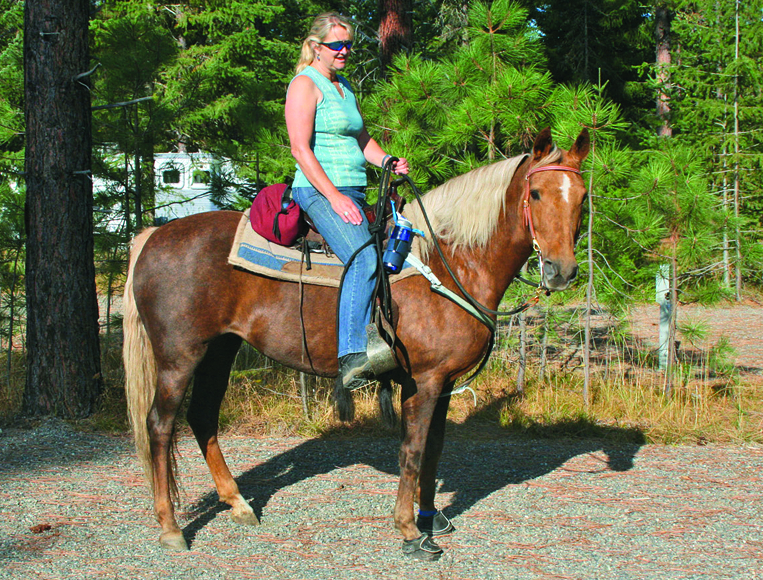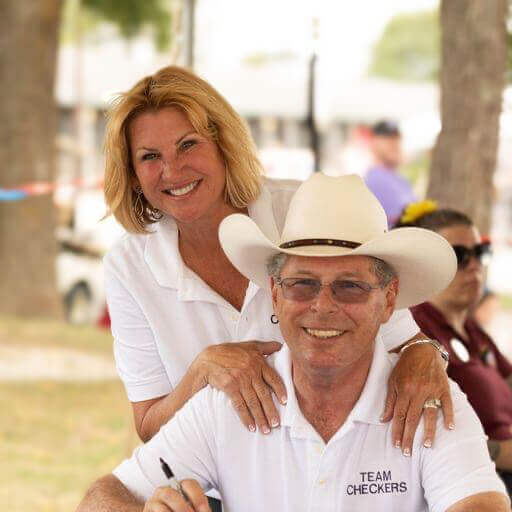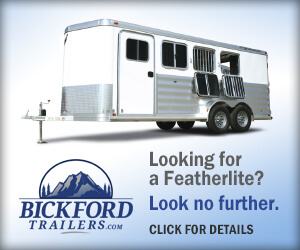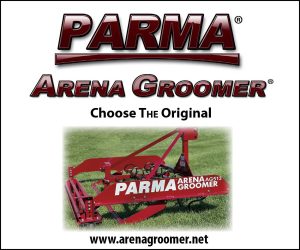Finding—and Training—Your Best Trail Horse
by Mark Bolender
Selecting a horse for trail riding is not an easy process because several factors must be carefully considered. Ultimately, it’s a decision about which horse is right for a particular rider and that’s just the beginning in creating the “perfect” trail horse for that rider.
When a customer wants my input about choosing their trail horse, I first ask them three important questions:
What sort of trails will they be riding on?
Difficult mountain trails, short leisurely flatland rides, or lengthy day trips are all very different and require different qualities in the horse. Thus, the horse should first be matched with the rider’s purpose. For example, a demanding mountain trail requires a particularly sound and fit animal. But an older horse that’s not so sound may do just fine for an occasional day trip through easy trails.
What kind of energy and speed to they prefer?
When that’s required, I advise finding a horse that can cover ground quickly and safely. A lazy horse, or one that prefers walking, will be frustrating if the rider wants to get around fast.
Lastly, does he or she like to stop on the trail often and talk with fellow riders?
If this is important, a quiet horse that’s “chat broke” is best suited for that rider. The rider that prefers going slow and stopping to admire the natural beauty of the trail is best suited to a slow and quiet horse.

Opinions about defining the ideal horse are as varied as there are people. In the end, it’s all about matching the needs and personalities of horse and rider. One thing I’m wary of is that when a horse owner loves his or her animal, many of the important points I mention above are overlooked, usually to the detriment of both horse and rider.
When the rider understands the horse’s personality, the “fit” is made even better. Horses have individual personalities, just like people. It’s part of that animal’s beauty and is influential in a rider choosing a particular trail horse. My advice for selecting a horse for a mountain trail rider is to make sure the animal is broke, confident, bold, and quiet. Also, it must have been trained to think on its own. Thinking on its own means the horse has been trained to assess trail obstacles and how to safely navigate them with minimal interference from the rider. It uses its instincts to place its feet and plot a path through the obstacles, guided only by slight leg and hand cues from the rider. The mountain trail horse should be practiced at navigating rocks, logs, and water with ease and without panicking. This is achieved with good training on mountain trail courses. Good training is essential because most mountain trails have such natural obstacles and can be quite hazardous for the untrained horse.
Good training results in a horse that forms a partnership with the rider. This means the animal doesn’t attack an obstacle on command. Rather, through subtle cues it knows what the rider is asking and then thinks about how to navigate through without the rider managing every footfall. This is important because when a horse becomes trapped in brush or logs, for instance, it feels a strong urge to escape and often panics. But a horse that’s well-trained for this situation will consider its options for getting out. Of course, overriding all of this is safety; a well-trained horse is a safe horse, and there is just no substitution for that.
The boldness and confidence of a well-trained trail horse makes it a joy to ride because the rider need not worry about what the animal is willing and able to do. When the horse meets the rider’s needs and desires, is properly trained for the trail, and forms the partnership so crucial for challenging obstacles, then the perfect trail horse for that rider is realized.
Happy Trails and Bolender Blessings!
Published in February 2012 Issue

Mark and Lee Bolender own and operate Bolender Horse Park in Washington State, which houses the finest Mountain Trail course in the world. They are the founders of the International Mountain Trail Challenge Association (IMTCA) and travel worldwide as clinicians and ambassadors of Mountain Trail. Bolender Horse Park offers riders of all skill levels and disciplines a fun and challenging trail riding adventure.
Mark has designed and built Mountain Trail courses in the USA, Canada, Australia, and Europe—with many more in development. Mark uses his artistic, landscaping, horse training, and construction skills to build these courses (NW Steel Design LLC www.nwsteeldesign.com).
Mark is the author of Bolender’s Guide to Mastering Mountain and Extreme Trail Riding. Visit www.bolenderhorsepark.com to learn more.





